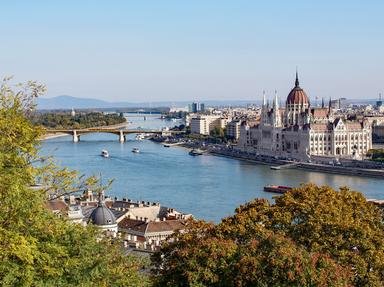Quiz Answer Key and Fun Facts
1. One of the most iconic sights of Budapest is the Széchenyi Chain Bridge which links the western and eastern parts of the city. What type of bridge is it?
2. St. Stephen's Basilica is one of the most important church buildings in Hungary. Is it true that it was named after the first Christian martyr, St.Stephen?
3. Heroes' Square is the largest square in the city of Budapest. A key feature of the square is the Millennium Memorial. What does it commemorate?
4. A short walk from the Heroes' Square will lead you to a building designed in the Neo-Baroque style. Which of these, the largest of its kind in Europe, would you expect to find within the premises?
5. The Hungarian Parliament Building is one of the oldest legislative buildings in Europe. Built in the Gothic Revival style, it is located on the banks of the Danube. Which of these was seen on the dome of the building during the communist regime in Hungary?
6. On the banks of the Danube outside the Parliament Building is a poignant memorial to the Jews who lost their lives during World War II. Sculpted models of what item of clothing are found seemingly strewn along the river bank?
7. Another important historical building in Budapest is the Dohany Street Synagogue. Which of these facts concerning it is true?
8. Built on Castle Hill, the sprawling Buda Castle towers over the city providing a panoramic view. Is this the residence of the President of Hungary?
9. Another popular look out point on Castle Hill is the Fisherman's Bastion. What do the seven towers of the structure stand for?
10. In front of the Fisherman's Bastion is a Roman Catholic church called Matthias Church. What other function has this structure served during its history?
Source: Author
zorba_scank
This quiz was reviewed by FunTrivia editor
spanishliz before going online.
Any errors found in FunTrivia content are routinely corrected through our feedback system.

